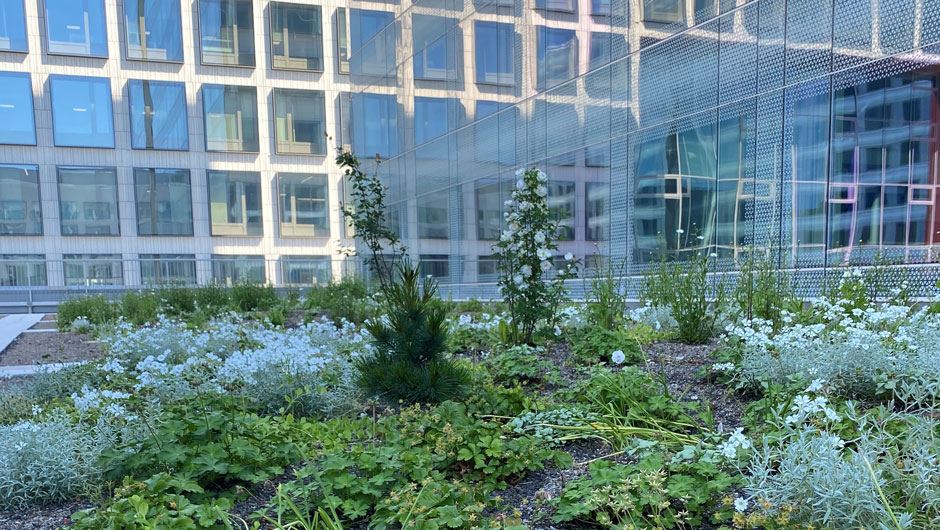Sustainable data centers as a service
- City
- Stone and garden works
- 7/8/2020
Green roofs increase biodiversity in cities
In addition to making the urban environment feel more calming and comfortable, green roofs and plants help manage rainwater. At Tripla, green roofs feature various layers as well as many species of trees, shrubs and perennials.

Designed as the centre of Pasila, Helsinki, Tripla features green areas across its three blocks, forming an area of about one hectare built on roof structures. The most extensive green areas consist of the residential yard and the roof gardens in the middle block and the Pasila station. The Music Museum Fame and the access ramp to the Firdonkatu parking hall also feature green roofs. There are also large planted areas on Fredikanterassi as well as between the blocks.
Green structures built on roofs must be sufficiently light and have an optimal capacity for both holding and permeating water to meet the requirements of the structure. Green roofs help rainwater management by holding rainwater, protecting the waterproofing elements of the roof and, thus, extending its service life, reducing noise, acting as a carbon sink and cleaning the air by absorbing particulate emissions and dust.
“The vegetation on the Tripla green roofs was designed to be very diverse and dynamic. This means allowing nature to make the decisions; the most successful plants replace the ones that can’t hold their own. We chose a layered planting technique and a large number of species to meet the challenging conditions of the green roofs from scorching heat to heavy wind and rain. Only time will tell which plants will thrive and which will not,” says Construction Manager Johanna Häkkinen from YIT Finland Ltd who was involved in designing the green structures for Tripla.
Tripla certainly boasts biodiversity and layers. The perennials, including geraniums, anemones and asters, are accompanied by medium-sized trees and shrubs, such as Amur and Tatar maples, smooth shadbush, chokecherries, burnet rose and various vines. The saplings and seedlings of the selected trees and shrubs are small to make it easier for them to adjust to the conditions on the roof garden.
“We have also planted seeds of daisies, yarrows, maiden pink, bellflowers, harebells and wild strawberry on the roofs. They are perennials and will slowly start to germinate. This means the roofs will be evergreen and full of colourful flowers. They’ll be a delightful sight for us humans and an excellent habitat for various insects that are vitally important for a healthy environment,” says Johanna.
Fredikanterassi next to the Pasilansilta bridge features grasses that tolerate sunshine and wind, whereas the shady area between the blocks features azaleas, rhododendrons and common yew. The residential yard has a rolled turf, various maples, bird cherries and small pines. Sargent’s cherries form blooming avenues on the grassy area in the residential yard.
“In some of the green spaces, we are piloting a biochar-based medium. We are collecting feedback on its functionality compared to traditional soil. We have also tested planting honey locust and Japanese angelica tree. We want to see whether these species can thrive in this warming climate,” says Johanna.
All the city residents are able to admire the planted green spaces as they grow. The green roofs, on the other hand, can so far only be enjoyed by insects and pollinators, the area’s office employees and hotel residents.
More about business premises in Tripla



